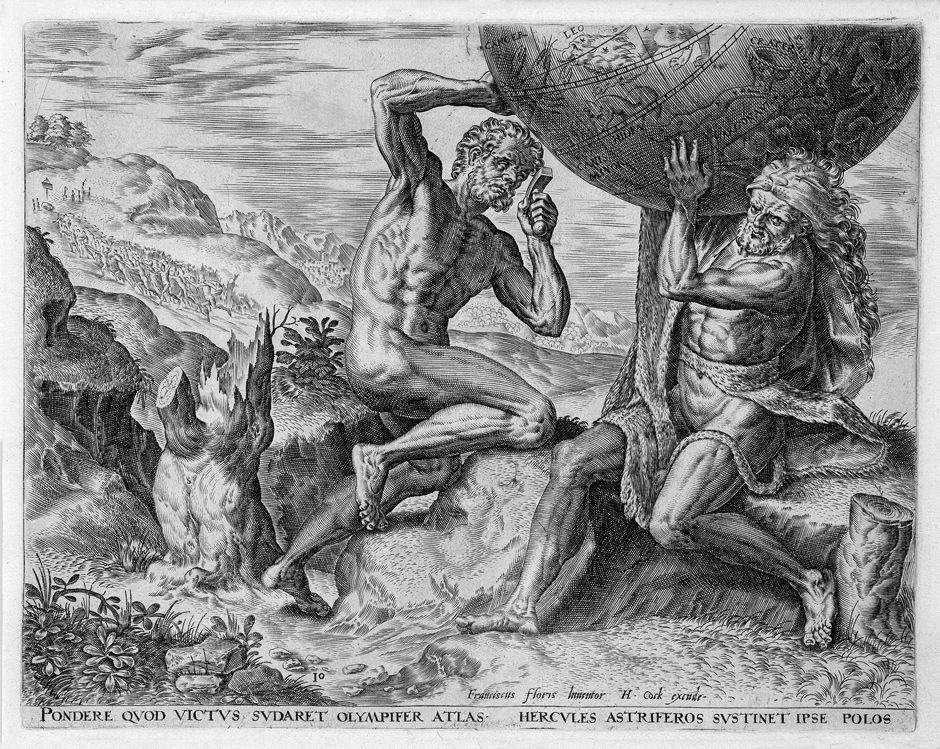Loading the page ...
Cornelis Cort
(1533 Hoorn – 1578 Rome)
The Twelve Labours of Hercules. 10 engravings, each measuring c. 22.4 x 28.6 cm. 1565. The New Hollstein 172–181 III (of IV). Watermark: Gothic P.
This suite edited by the Antwerp publisher Hieronymus Cock in 1565 is a masterpiece of printmaking by the Dutch engraver, Cornelis Cort, which in all probability arose prior to his departure for Italy the same year. The engravings reproduce the cycle of paintings made around 1555 by Frans Floris for the residence of the Antwerp merchant Nicolaas Jonghelinck; only one of these paintings has survived. The drawings Cort used as models were probably done by Simon Jansz. Kies, one of Floris’ pupils. The limited amount of space available in the room where the paintings were displayed obliged Floris to compress the twelve works into ten painted compositions, two thematically related episodes being combined on two of the paintings. Cornelis Cort also adopted this procedure but extended Frans Floris’ compositions to include a landscape backdrop.
The painted cycle is an outstanding example of the artistic aspirations of Antwerp Mannerism and provides a vivid illustration – although only handed down by dint of Cort’s ingenious reproductive engravings – of how strongly Floris was indebted to 16th century Italian models. The figure style is strongly influenced by Jacopo Caraglio’s engravings after drawings by Rosso Fiorentino, whereas the composition of Hercules Wrestling with Antaeus, for example, harks back to a drawing by Raphael that had been handed down thanks to an engraving made by Agostino Veneziano (see Hieronymus Cock. De renaissance in prent, edited by J. van Grieken, G. Luijten, J. van der Stock, Brüssel-Leuven-Paris 2013, no. 38, p. 166 ff.). Floris’ Hercules cycle is unique in its exuberant creative power; few artists are likely to have succeeded in producing such a dramatic and original interpretation of the ancient material.
Cort’s engravings also stand out for their concentrated, powerful technique and compositional coherence. The somewhat dry, unpolished linework gives the prints great expressive power which dramatically brings out the dynamism and the raw violence of the individual episodes. Cort’s disciplined burin technique with its dense hatching patterns gives both man and beast an almost sculptural plasticity and a tremendous physical presence, while the striking chiaroscuro effectively intensifies the pathos of the individual scenes.
Superb, tonal and harmonious impressions with wide margins, before the name of Cornelis Cort and the eradication of Cock’s address. Slight staining and surface soiling, minor defects in the margins, occasional remains of old paper hinges on the verso, otherwise in very good condition.
Contact us for further information